A Before and After Slice of Habitat Restoration in the Sepulveda Basin Wildlife Reserve
In September 2019, a fire roared through the Sepulveda Basin. Starting in the driest period of the year the fire burned from Victory Boulevard to the east side of the wetland lake that sits in the middle of the wildlife reserve. The fire turned what was a lush but dry habitat into a moonscape. Plants that had survived for years were reduced to ash. Soil that was covered in grass, mustard, and native plants was scoured down to exposed clay soil. Nowhere was this more obvious than in the west field that runs from Burbank northward along Woodley Ave.
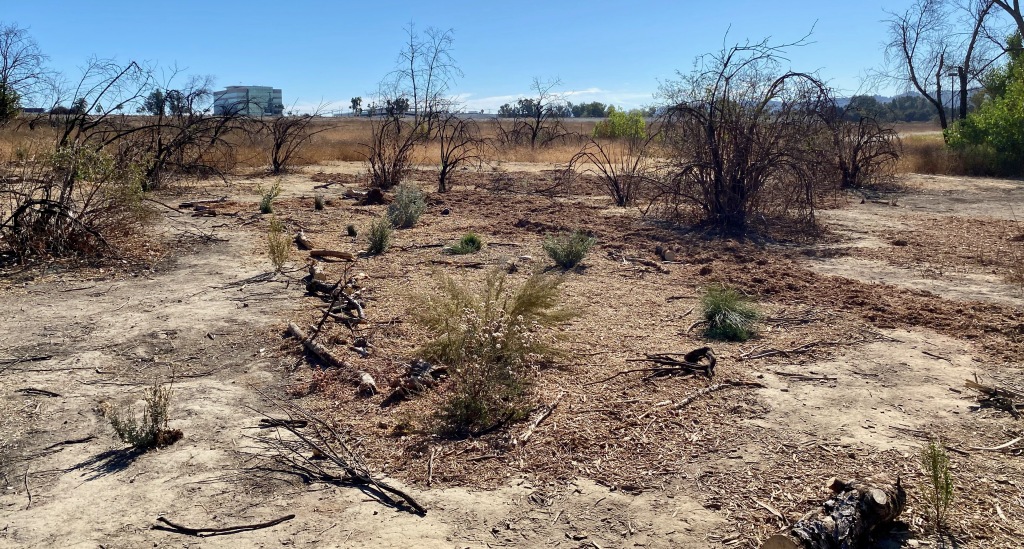
This was how I rediscovered the Sepulveda Basin in late 2020.
Working remotely because of the pandemic, like many, I spent months under a lockdown that left me depressed and isolated. In that state, one mid-weekday, I decided to go to the wildlife reserve and get out into nature for a walk. To my horror, I discovered that little had come back since the fire. What had been wiped out was still just as barren as it had been a year before. My understanding of how habitats recovered from the fire was limited and seeing this proved it.
Read: Observing the Sepulveda Basin Wildlife Reserve in May
With the shock of the situation, I wanted to find a way to help fix it.
While doing some research, I stumbled upon the Sepulveda Basin Wildlife Reserve Steering Committee. There I found a group that has been meeting twice a week for the last decade to remove invasive weeds (most recently short pod mustard) from the high public traffic areas of the reserve. At the time, I had grown a dozen toyon (Heteromeles arbutifolia) from seed and wanted to find a good home for them. Seeing the opportunity, I contacted this group and offered them to plant into the space.
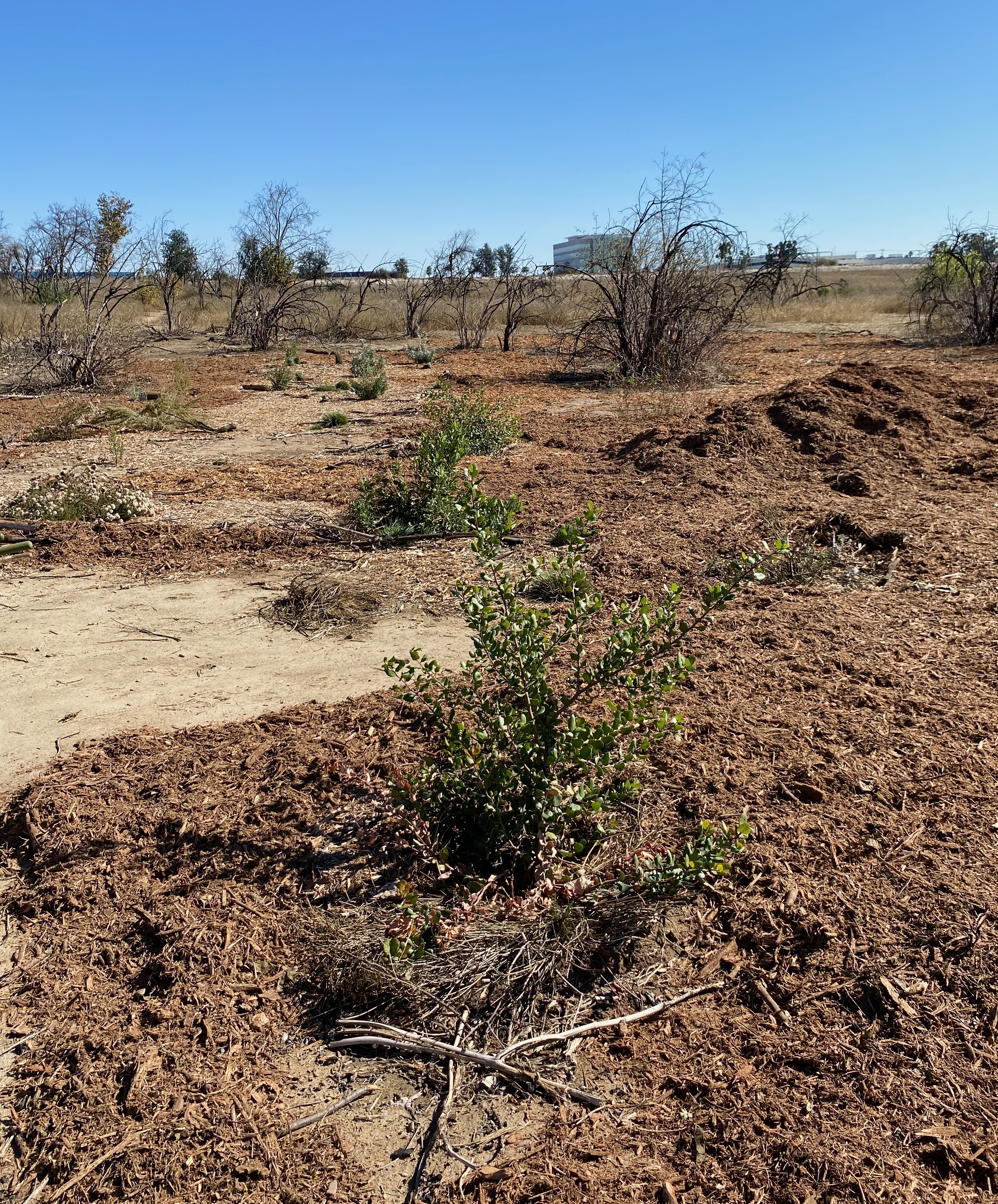
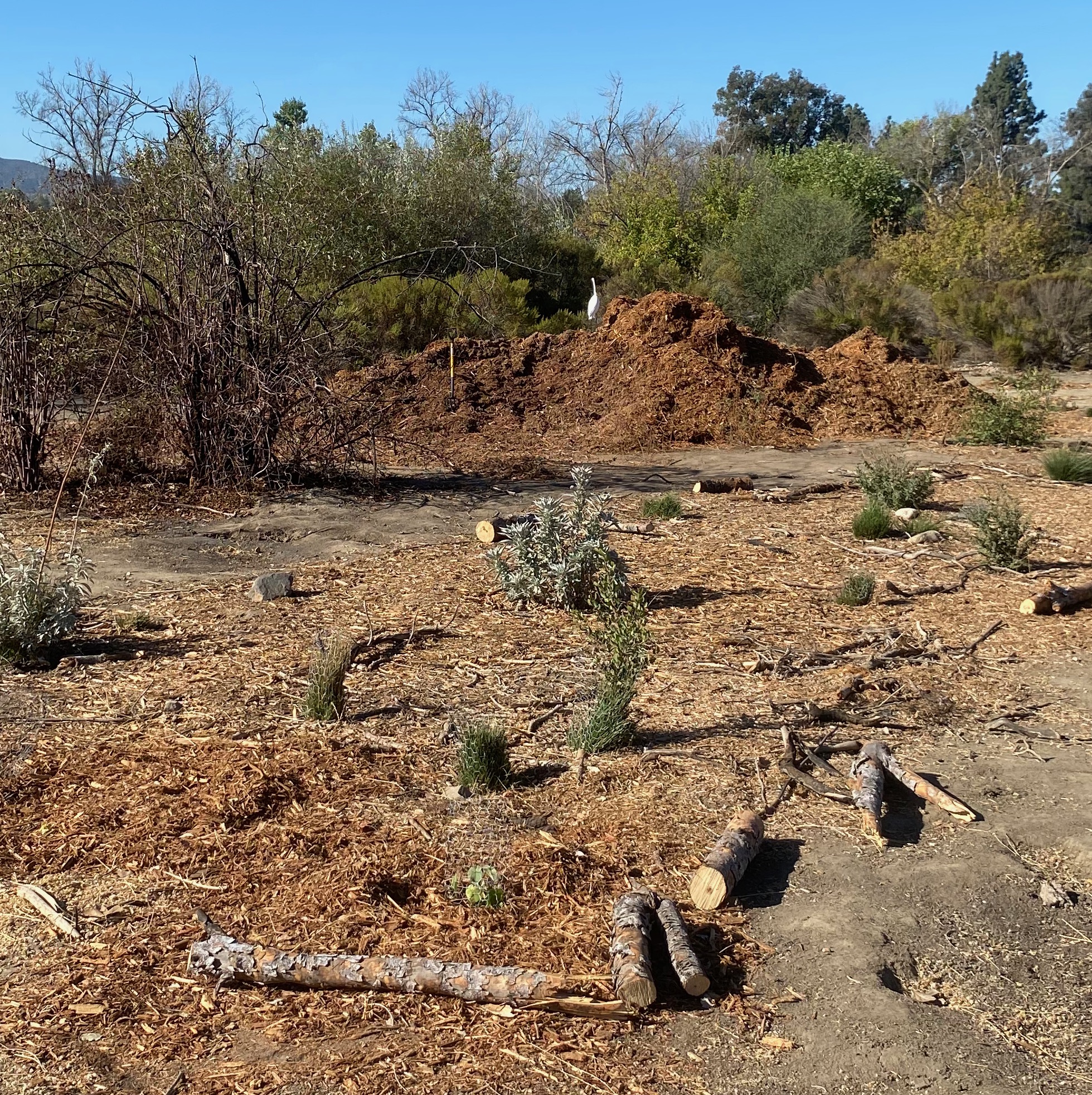
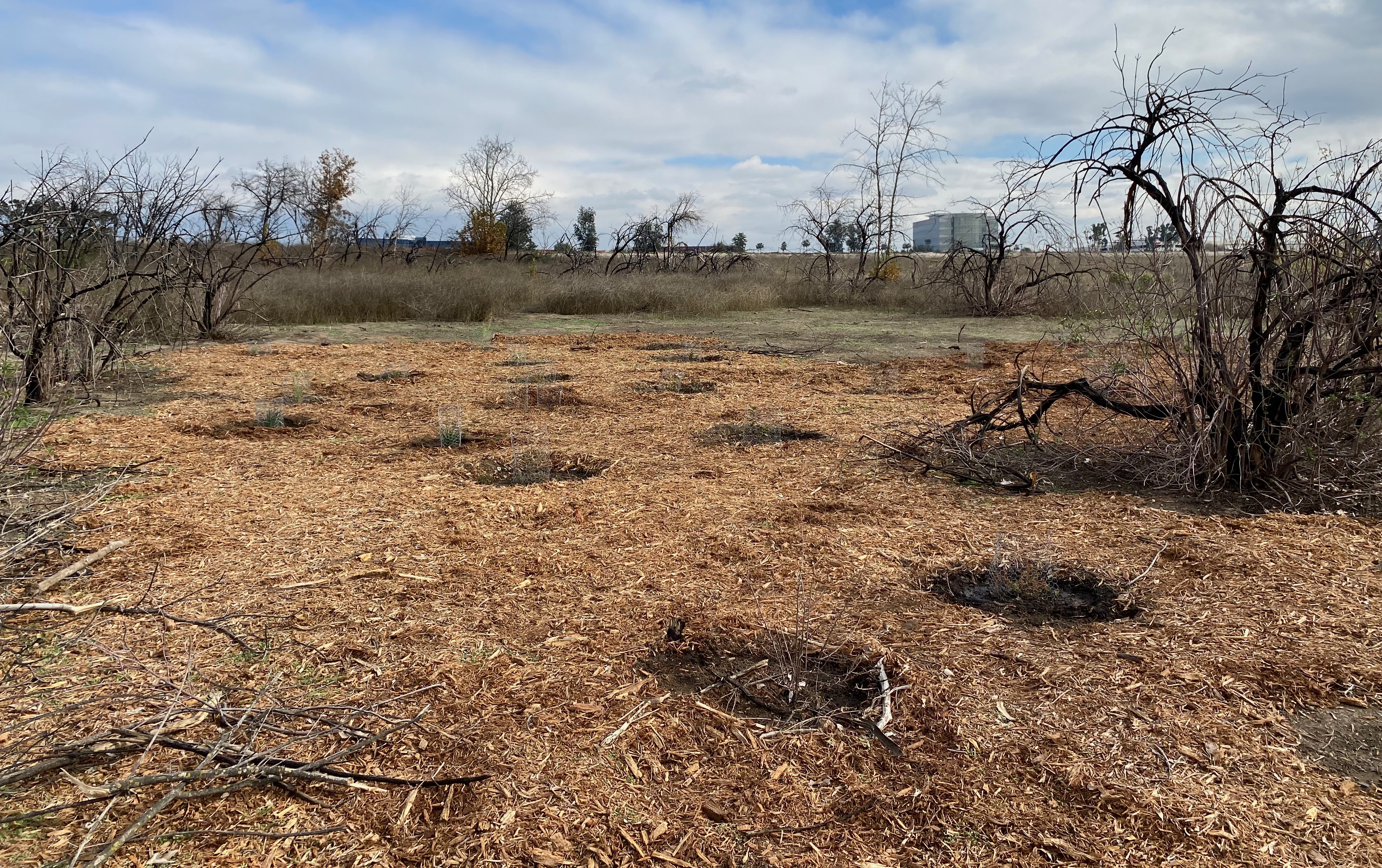
As luck would have it, the weekday weeding leader, George, was organizing a monthly weeding activity on weekends right at the same time. I quickly became a volunteer, planting all the toyon I had grown. I stayed and have been back to volunteer ever since.
In 2022, I decided to kick things into overdrive.
Restoring Habitat
After a few years of volunteering, weeding, and occasionally planting, I decided to try and undertake a larger project.
We had been toying with the idea of a disseminated nursery. Essentially, with the guidance and encouragement of our expert horticulturalist, Robert—himself a native plant grower and gardener, we started producing native plants at home to use in the Sepulveda Basin Wildlife Reserve.
Read: Observing the Sepulveda Basin Wildlife Reserve in July
With a home nursery of almost 200 plants, we worked to clear the weeds and spread mulch to suppress new weedy growth. I was also keen to hold as much moisture in the soil given summer sun turns the cold season loamy clay soil into adobe bricks without any canopy or ground cover.
In October 2022, we dropped 35 plants, moved mulch, and watered in a space along the west side of the creek. It was a great start to what would be a busy planting season. And then, not two weeks later, all 30 had been pulled up and vanished.
We were devastated.
Worse, whoever had pulled them out did so methodically by removing the rabbit cages pinned to the ground to protect them, setting them to the side. It did not seem malicious, and I do not believe it was theft. The area is in a very dense urban city with a large volume of unregulated day and nighttime traffic.
Refusing to be discouraged, we leaned into the setback and, in November, started planting on the north side of the lake.
New Ground
With renewed conviction, we started planting on the north side of the reserve. It was slow going at first. Many old and dry weeds that had not been burned needed to be removed, and there was little in the way of preparation. We did have a 5-yard pile of mulch that Parks and Recreation had procured for us and a blank canvas.
Unlike the last time, with this new plot, we opted to plant in weekly intervals dropping in 10-15 plants at a time, moving mulch, and watering as we went. As the cold settled in we pushed on, declaring it to be the “perfect planting season.”
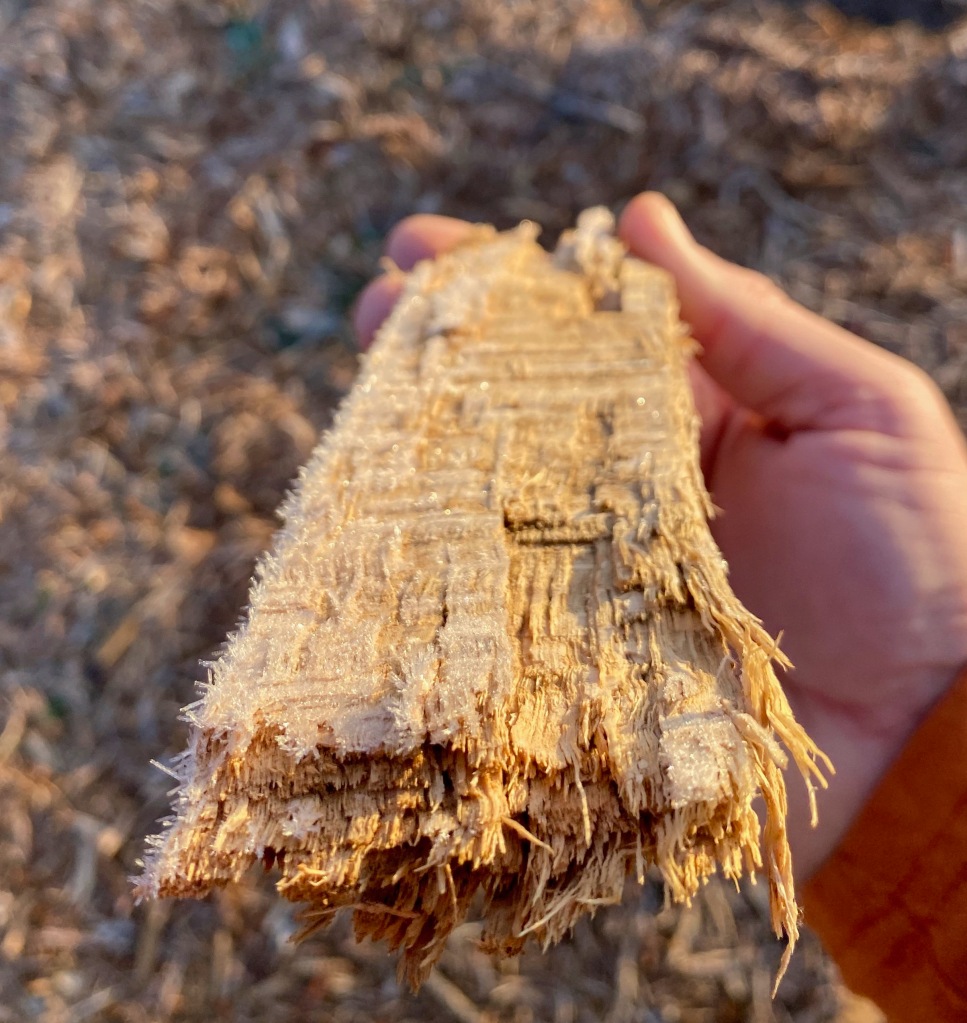
In the new year, we battled illness, weeks of frost, and an onslaught of rain that kept us from planting for weeks at-a-time. The good news was that we did not have to water as much as we thought which was a huge help given how everything was hand watered from the lake.
Working nearly every weekend with help from family and friends—both old and new, we are fast approaching the 8-month mark since breaking ground. What was amazing was the space looked nothing like it did in November of 2022. The moonscape is disappearing.
With diligent weekly inputs of time, sweat, and some blood, we have restored almost a half-acre of land back to a semi-natural state. Every plant installed is regionally appropriate and put in with the changing ecosystem in mind. There are 6 new trees, more than 80 shrubs and annuals, and many islands of flowers filling the space with a vivid display of color. On top of that, the toyons planted in late 2020 and 2021 have matured and are beginning to show signs of flowering, a first for them since being planted. Older plantings are undergoing a second-year growth cycle as wild native sunflowers have resprouted and flowering.
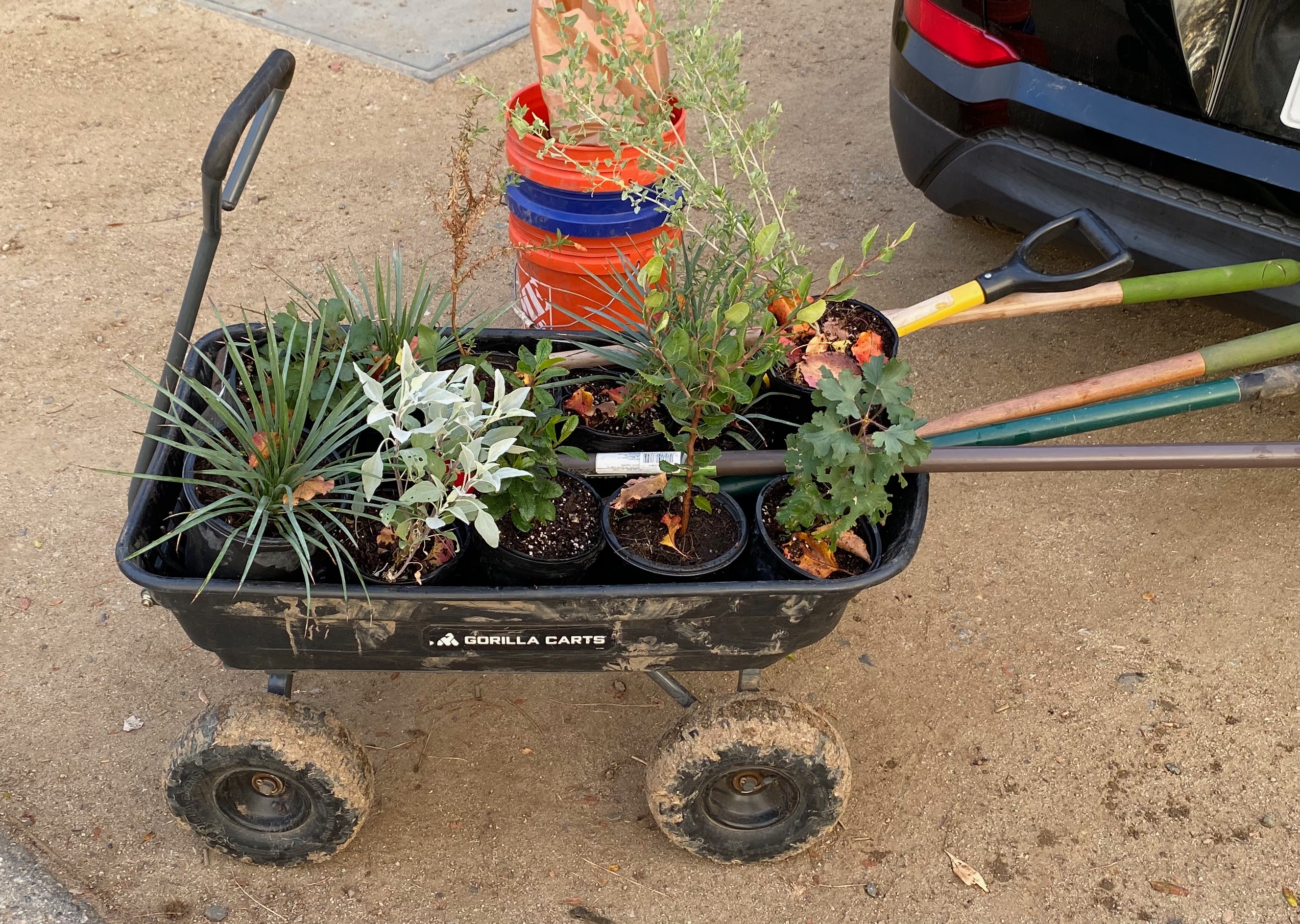
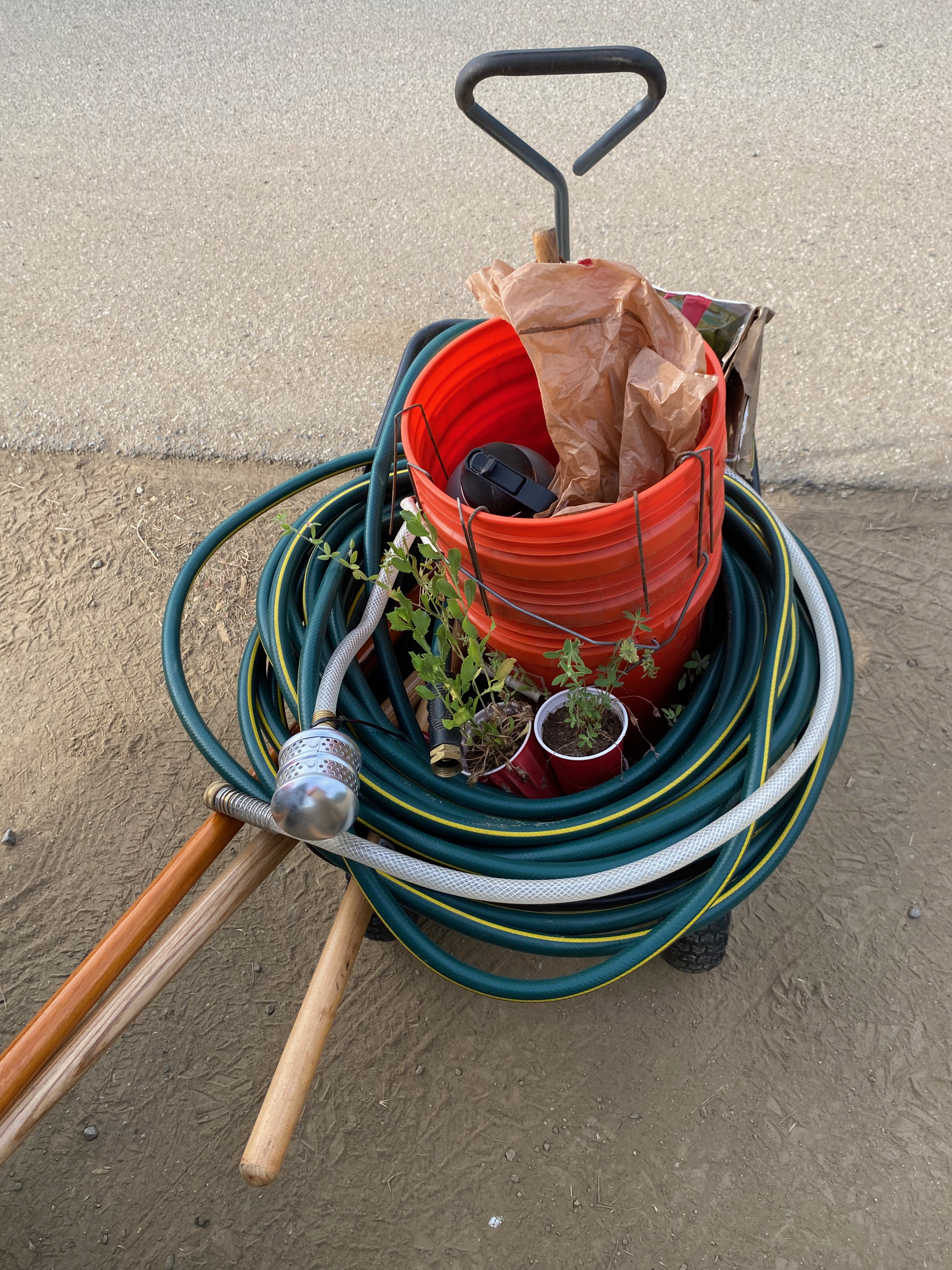
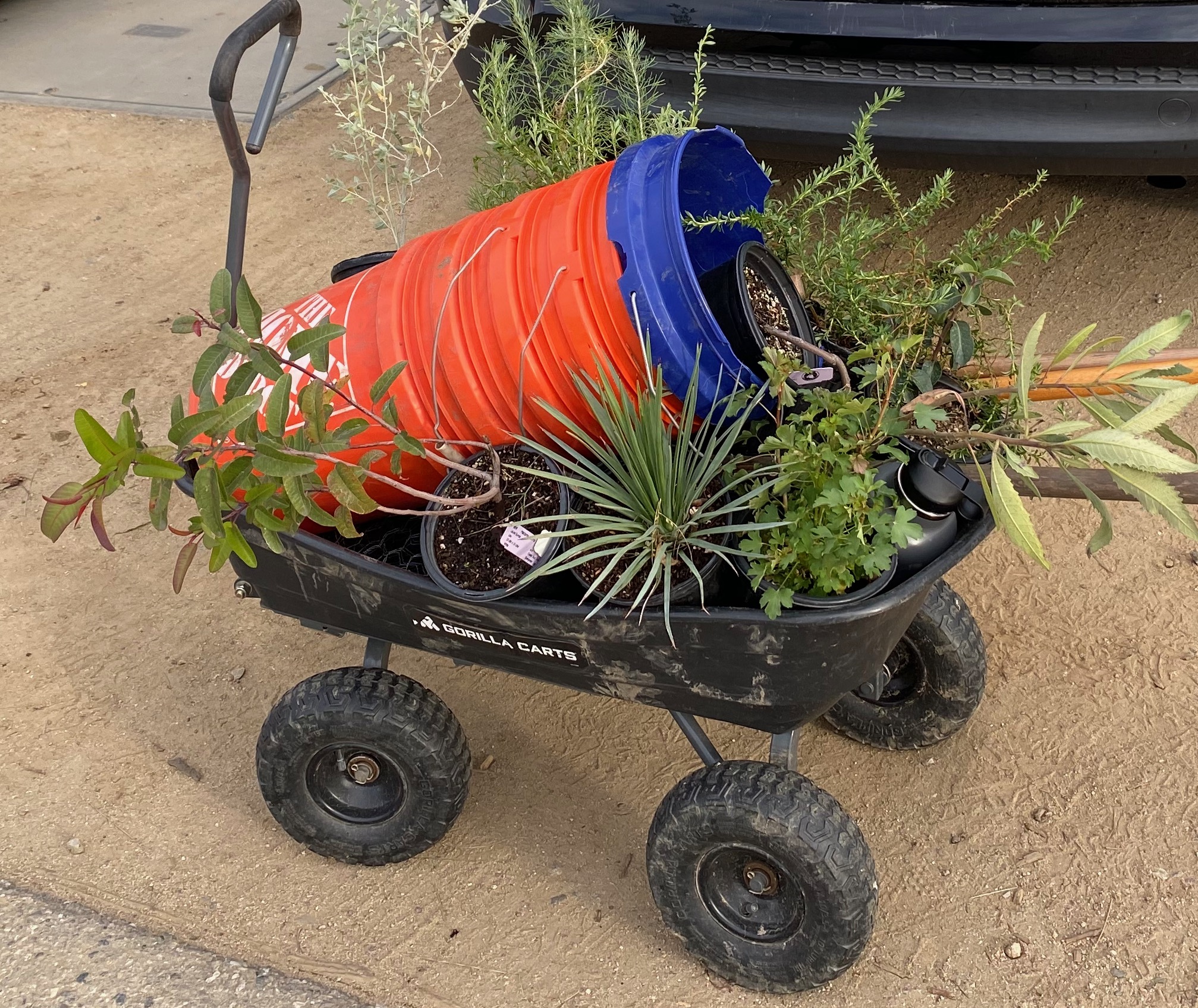
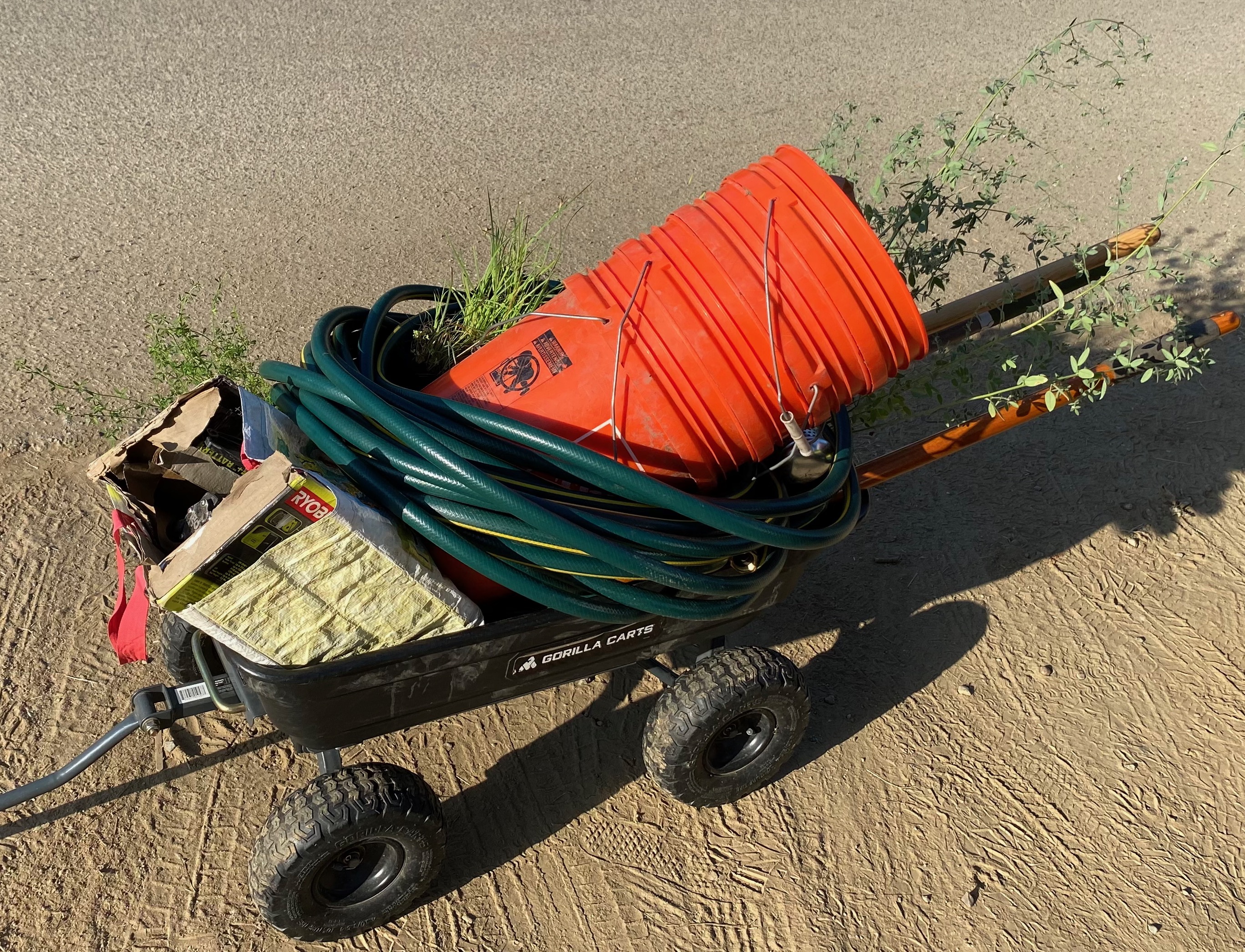
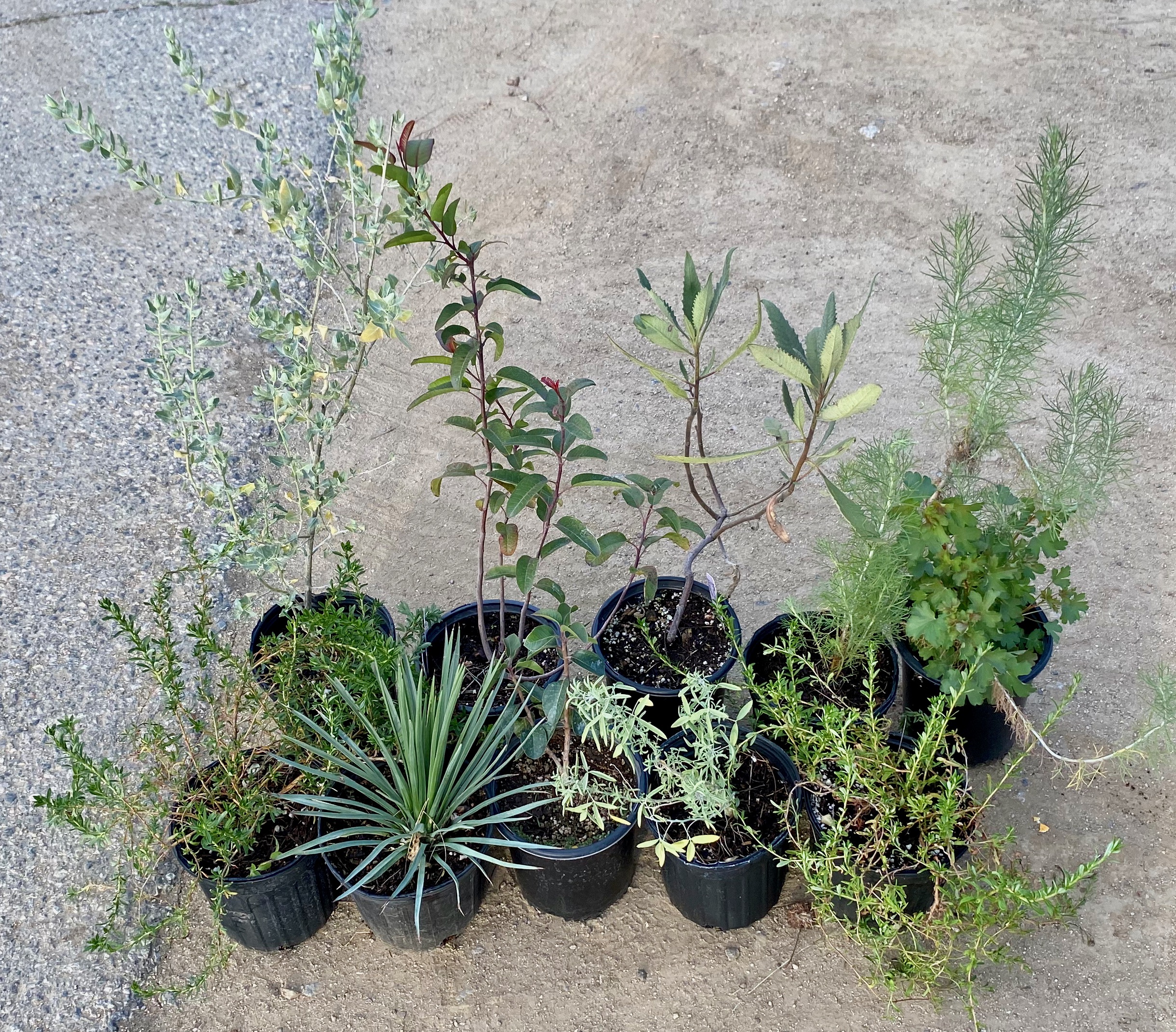
All this positivity does not come without a degree of loss. Since we started planting, we have lost more than a dozen plants to the elements. Flooding from the rains decimated a few, but human interventions have played a part, too. As I mentioned, the space exists in a high-density urban ecosystem where accidents can happen. Many of our losses result from reckless stumbles, shortcut takers, or wild animals feverishly looking for their next meal. These things happen. With browsing prevention cages and the frequency of our human presence, the volume of issues seems to have diminished. This was especially true once we plotted footpaths through the planting areas.
Public Impacts
One of the loveliest outcomes of working to restore the space is the compliments from passers-by. Not because they represent some ego boost or congratulation. Rather each passer-by that sees the work put into the space can see California native plants reemerging through the invasive mustard. It is a tangible change to the wildlife reserve that, for the last 3 years, has been devoid of color, texture, and life. Every comment from a walker, birder, or family on an outing is a new opportunity to share the value of what a native plant garden could look like.
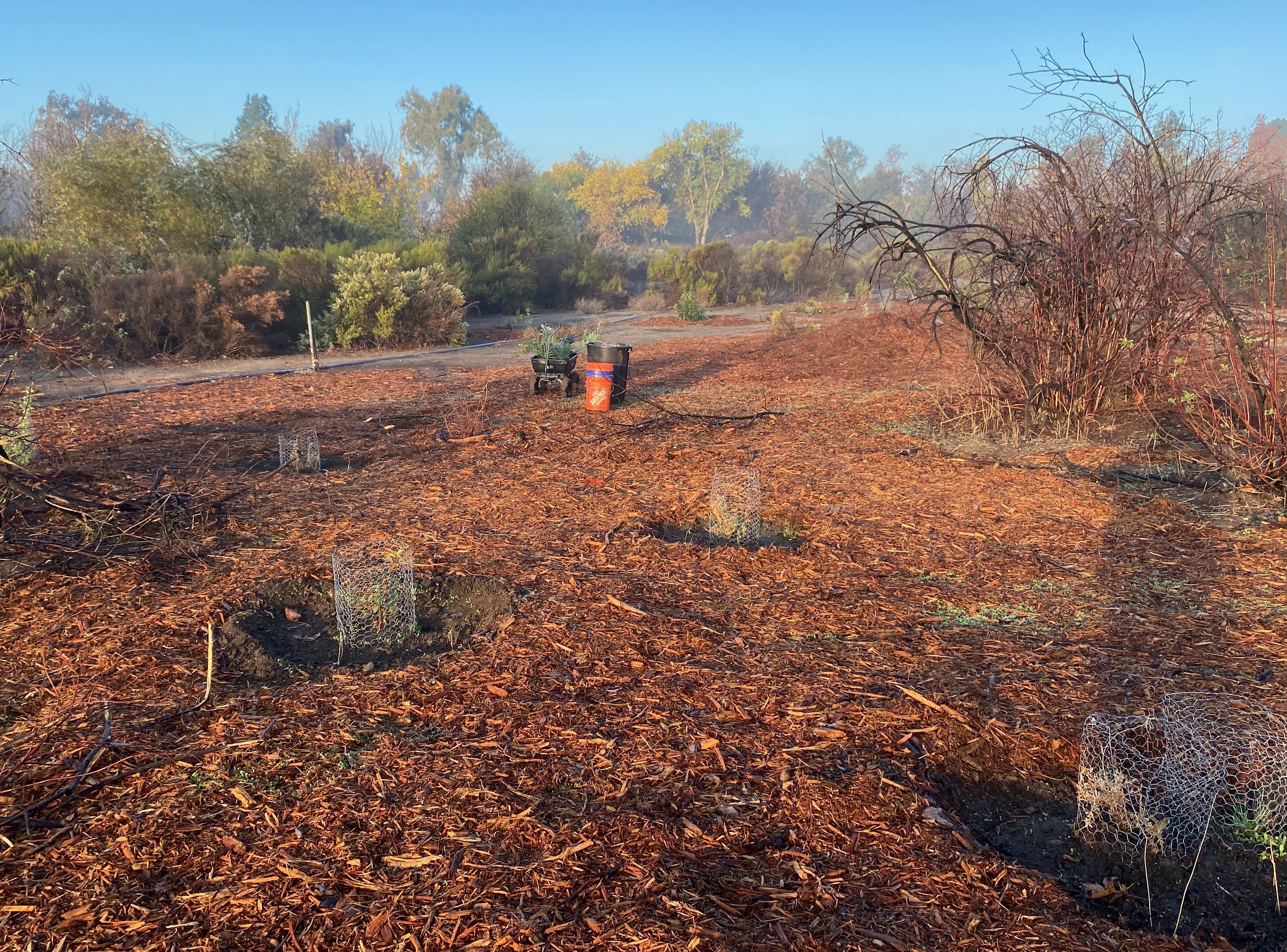
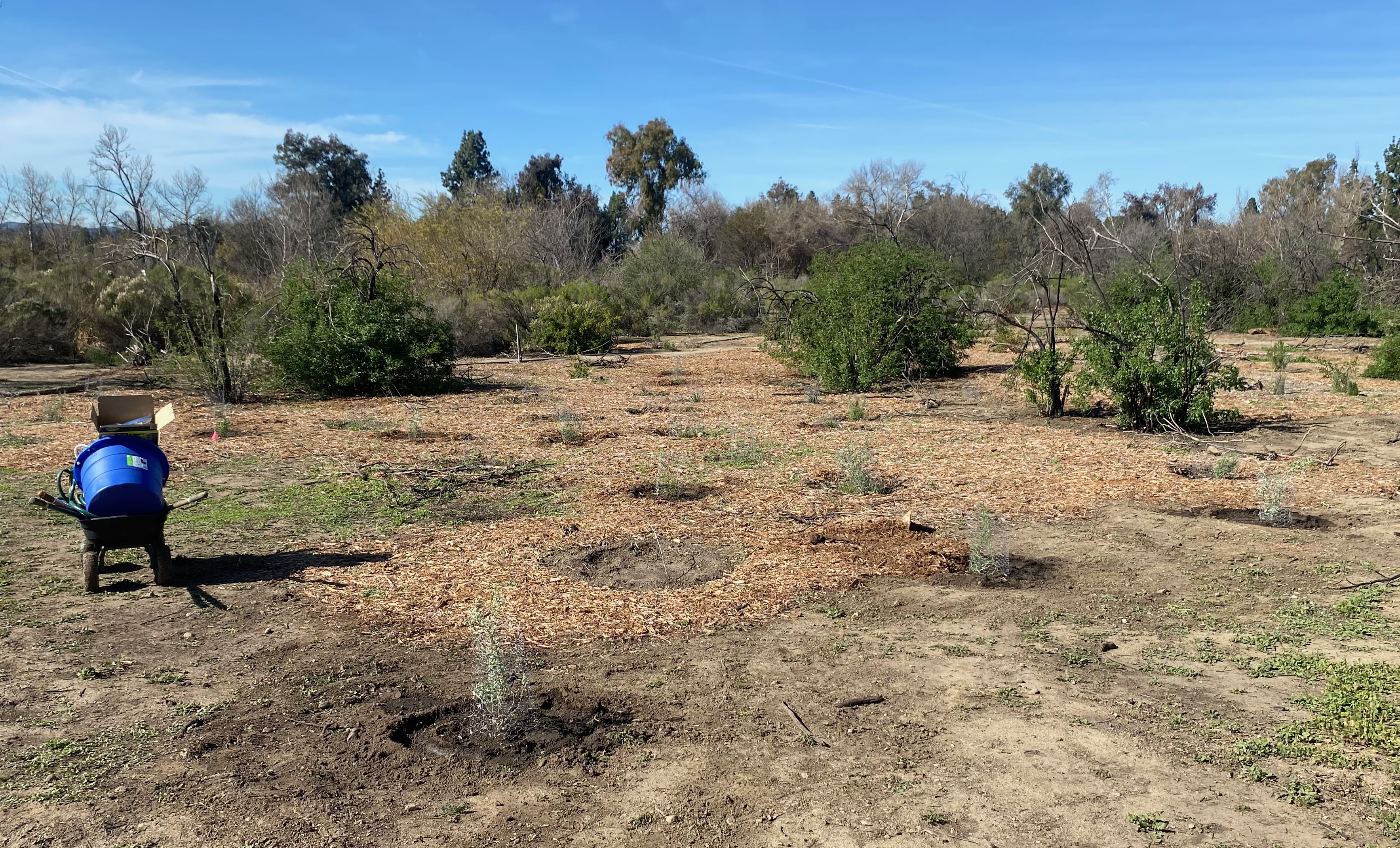
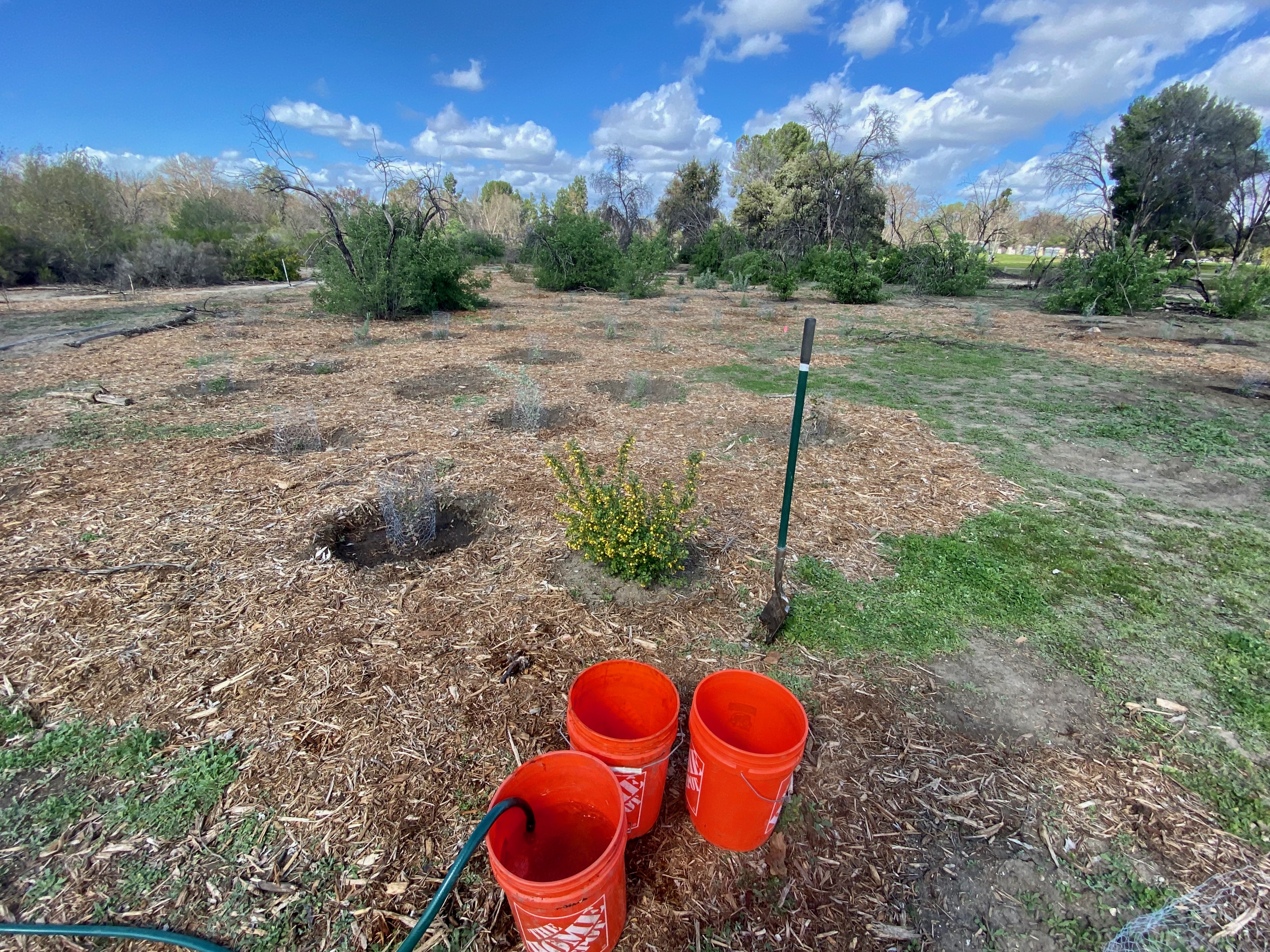
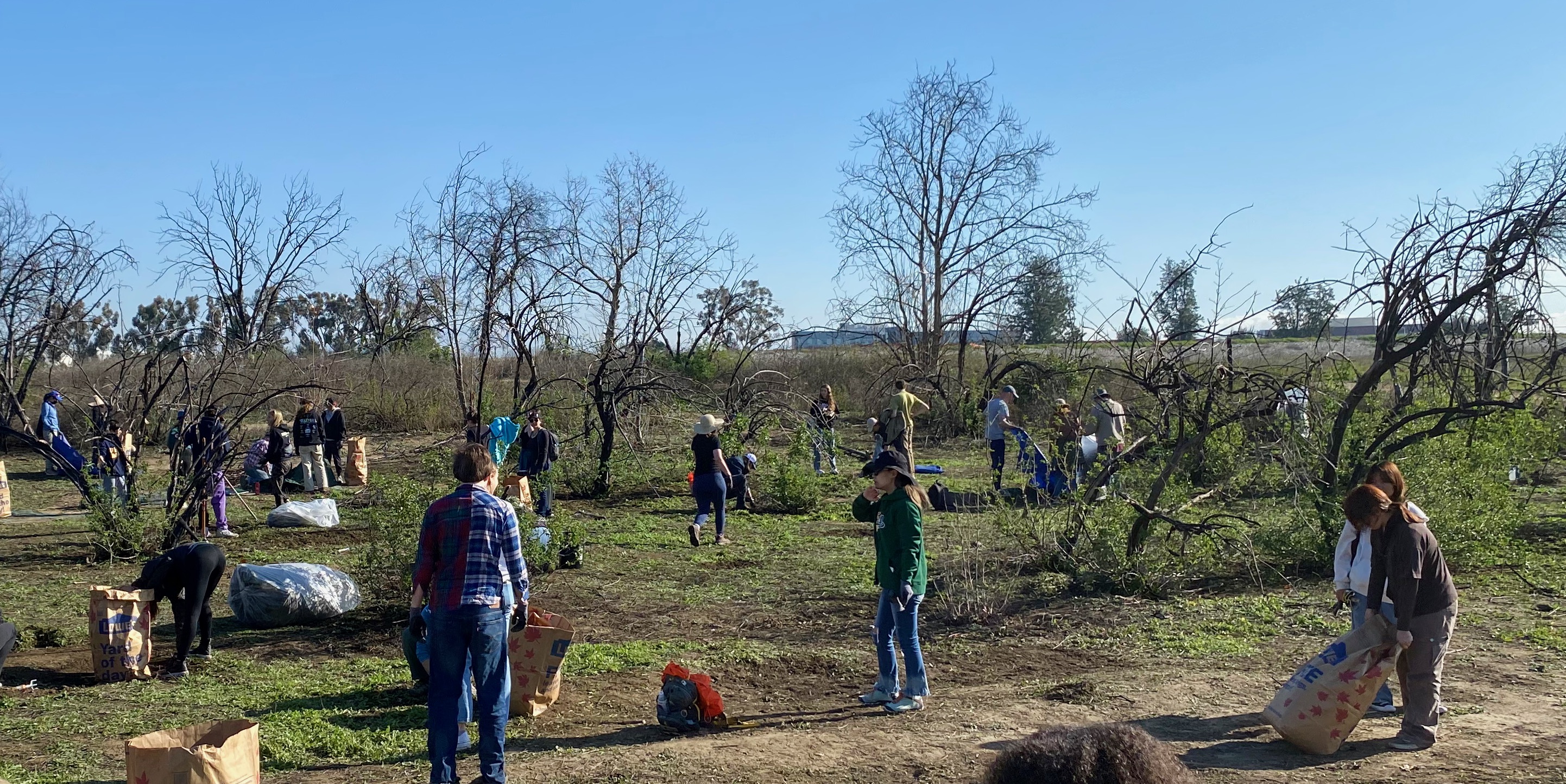

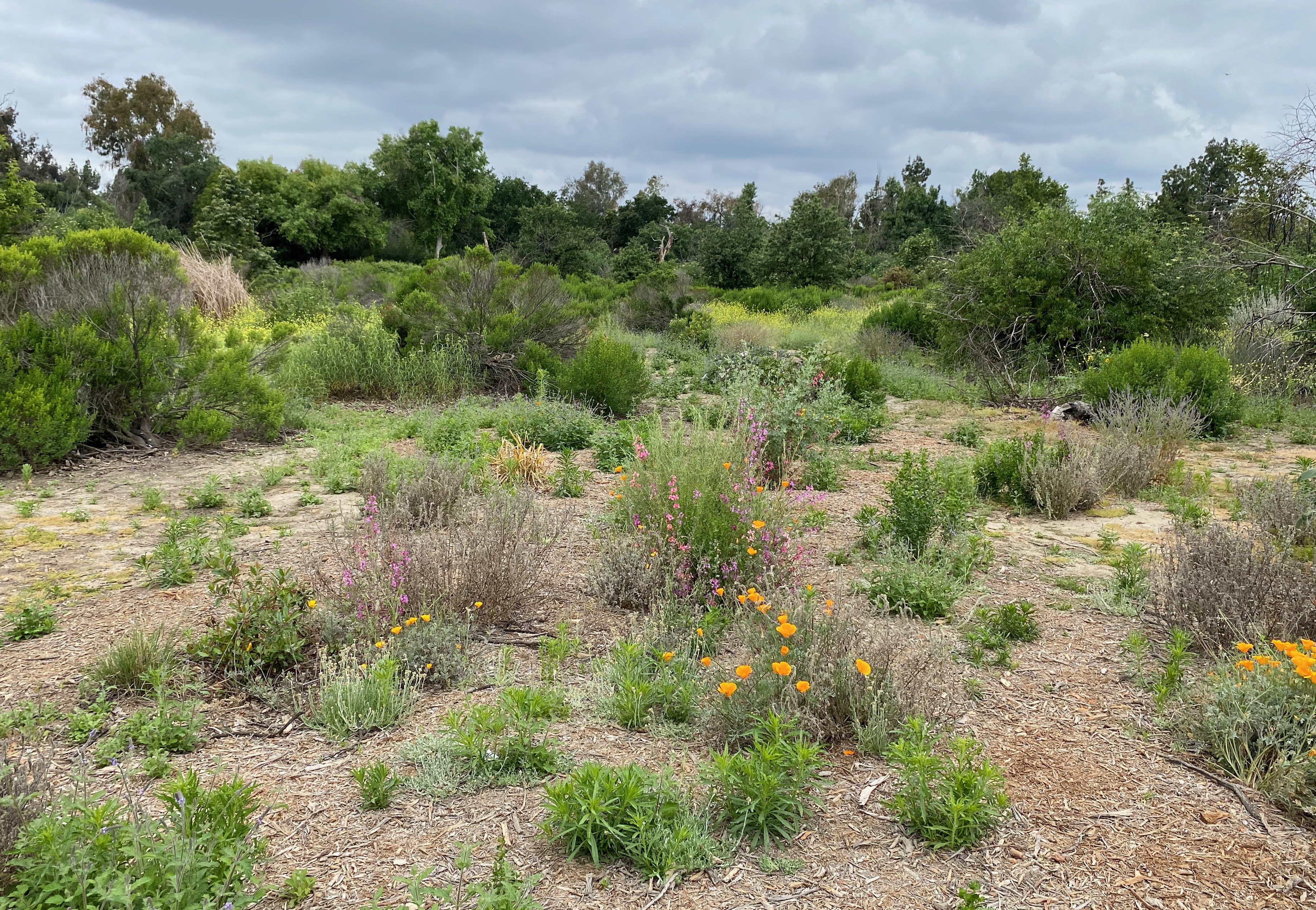
So far, the public loves it.
There have been a few unconvinced about the virtues of removing invasive plants. But most people get it. With the paths cut into the mulch, most visitors to the space have been aware of the work and respectful of the efforts put into it. We still have issues with brush and barriers moving, but most of the plants can hold their own making disturbances less worrisome.
What makes it worthwhile is seeing the plants in their natural setting living their natural life. Seeds that were scattered (loose and in seed balls) have come up and are producing seeds to replenish the seed bank for next year’s growth.
As we approach the one-year mark, I am excited at the possibility of what’s to come. More planting, more growth, more of the landscape returning to a natural state. Life is returning to a once lifeless place. I expect to see more insects, more birds, and more plants as the native seed bank is replenished pushing deeper into the damaged habitat. It will not happen without the human intervention and the hard work of the weekly California Native Plant Society weeders and the volunteers with Friends of the L.A. River and San Fernando Valley Audubon Society. Hopefully, it makes this work easier to do. The greatest lesson I have learned is that restoring native habitat in California is hard work and requires an army of volunteers, supporters, and boosters to help cheer them on.
It’s good work. Better when you can see a clear before and after picture to get a measure of the work.
Big thanks go out to George W., Robert K., Steve H., Ann A., Jess A., Nestor M., Nate S. and all those that have helped this project along the way.
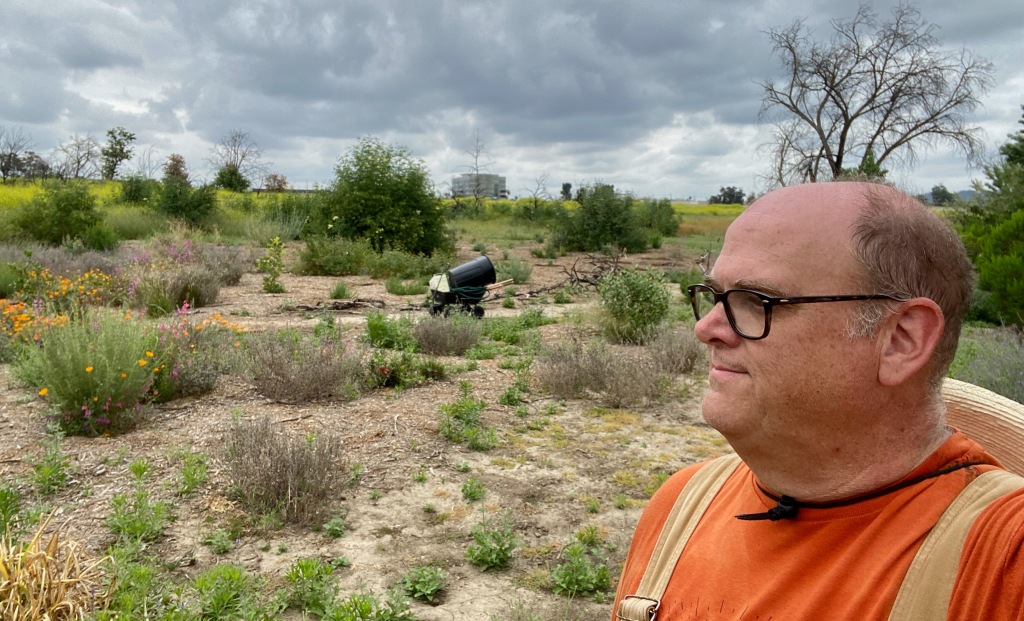
Interested in volunteering in the basin?

4 responses to “Restoring the Sepulveda Basin Wildlife Reserve”
[…] Read: Restoring the Sepulveda Basin Wildlife Reserve […]
LikeLike
[…] This is highlighted in adjacent plant activities like volunteering, classes, and communities around native plants. These groups exist beyond the native plant nursery in community organizations like the California Native Plant Society, Sierra Club, and others whose focus is on the environment and frequently host gatherings, lectures, plant sales, and volunteering events. One such event is a monthly weeding and restoration meet-up in the Sepulveda Basin Wildlife Reserve. […]
LikeLike
I just wanted to share my compliments to the work you and the other volunteers are doing. I’ve been going to the wildlife reserve periodically since 2018, and I was devastated to see what it looked like after the fire. But thanks to your efforts, it’s been such a pleasure to return recently, and it’s even encouraged me to start learning about native plants. I’m looking forward to seeing how the landscape changes with the seasons. Thanks again for all your efforts.
LikeLiked by 1 person
[…] Read: Restoring the Sepulveda Basin Wildlife Reserve […]
LikeLike